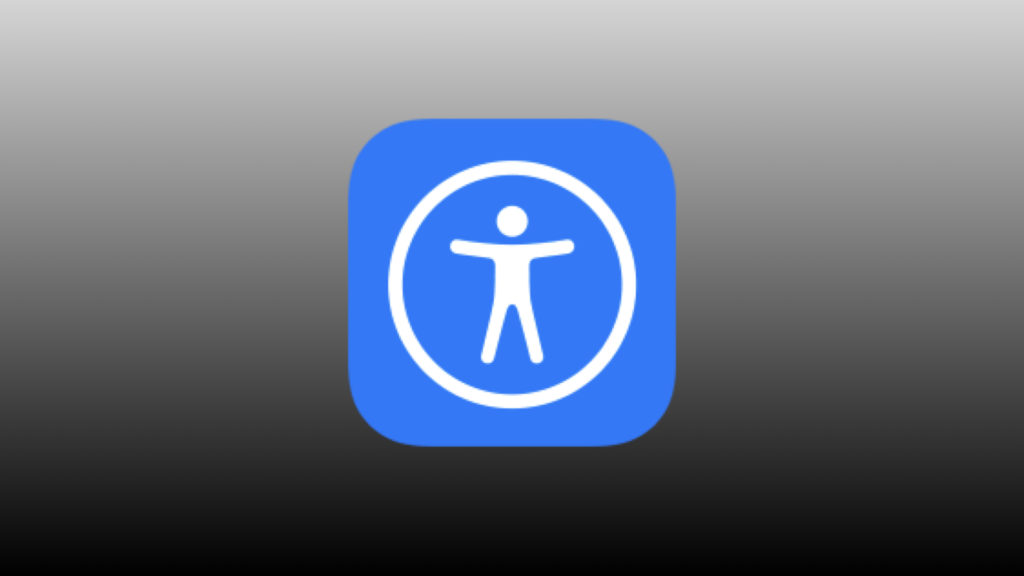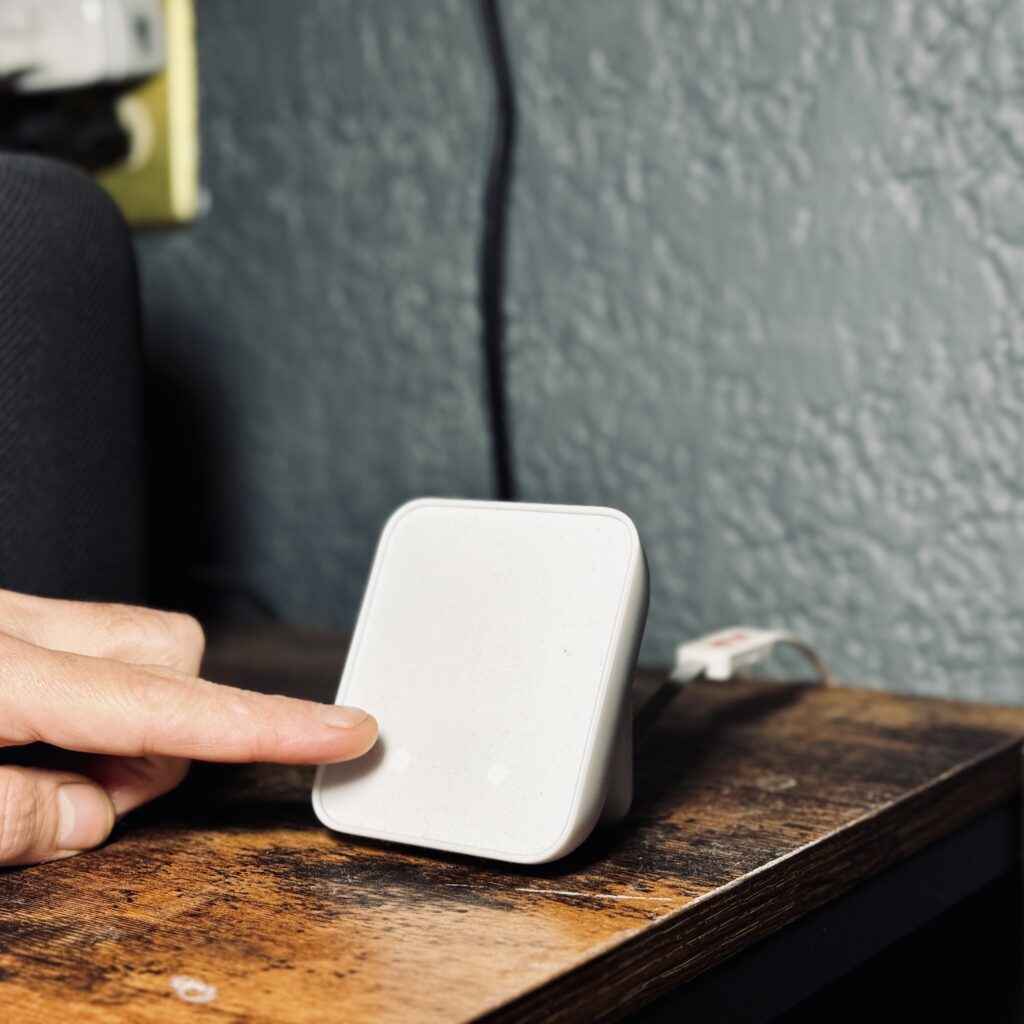I have sort of sat on the sidelines and watched the initial Matter hype play out without saying much. As an Apple Home fan boy, Matter 1.0 didn’t bring any new product categories or functionality, and, at least up until now, releases have largely consisted of smart plugs and other smart home staples that mostly connect over WiFi and honestly I’m just bored with that, but the Hub 2 from SwitchBot is not one of these yawn devices or is it?
The Hub 2 is Pretty on Paper
- WiFi bridge for Bluetooth SwitchBot smart home devices
- Matter compatible
- Temperature, humidity & ambient light sensors
- LCD display for temperature and humidity readings
- Smart IR blaster
- 2 programmable smart home control buttons
Know This Before You Buy!
- 8 Matter device limit
- Temperature and humidity sensors built into power cable
- 2m power cable
- Power supply included
- Physical buttons only control SwitchBot accessories and scenes
- includes kickstand for horizontal mounting
Is SwitchBot Reinventing the Smart Home Hub?
Since the introduction of the Hub mini that saw support for Siri Shortcuts, SwitchBot has been a fringe Apple Home brand. Even the Homebridge plugin is well-known for being very reliable and brings a lot of their portfolio into HomeKit, but native integration has been lacking. More recently, we’ve seen a number of Matter compatible products start to retroactively adopt the standard via beta software updates and even now they’re starting to ship with full-fledged support. Fewer manufacturers, however, have taken advantage of Matter’s bridge capabilities, but that’s exactly what the Hub 2 does in turn finally introducing native Apple Home support for SwitchBot devices. At least a few of them anyway.
As of the writing of this review, the Hub 2 exposes its temperature and humidity sensors, as well as any connected generation of their Curtain motors, the SwitchBot Blind Tilt, the SwitchBot Lock, the SwitchBot Bot button pusher, and their contact sensor and PIR motion sensor to HomeKit over Matter. SwitchBot promised to expand the number of devices that would bridge over Matter and they have definitely made good on that promise. This is particularly great for Apple Home devotees because the number of retroactive curtain motor options available is slim and blind tilt motors being non-existent, to the best of my knowledge.
Another way that the Hub 2 is rewriting the smart home hub handbook is the inclusion of sensors and an LED display. Most smart home bridges are little boxes that serve no other purpose aside from translating wireless protocols and as a result present the additional task of having to tuck it away somewhere out of sight. The Hub 2 is not such a device and, in fact, could simply be mistaken for a temperature and humidity sensor with its LED display, but there’s more under the hood. The display can be brightened and dimmed using the built-in ambient light sensor which is also able too be used as a condition for SwitchBot automations. It’s a device that you’ll actually want to have out on an end table, shelf, or nightstand, but not just for its display and sensors.
The SwitchBot Hub 2 adds two physical buttons capable of controlling SwitchBot accessories and scenes. This is incredibly practical in a bedroom nightstand situation to be able to control your lights, curtains, or blinds right from your bedside, but the control doesn’t end there.
Have older, or newer, A/C units, fans, humidifiers, or lights that are dumb? The Hub 2 can make them smart in seconds and open a pandora’s box of slick smarts. I actually replaced my Sensibo Air that sat on my nightstand effectively adding more convenient control and allowing me to repurposed the single-tasker Sensibo Air elsewhere in my home.
The smart IR blaster also fixed a strange HDMI-CEC issue I’ve had with my TV for years now. I, of course, have an Apple TV connected to it and have been able to turn the TV off when the Apple TV is turned off, but oddly the ON functionality just hasn’t worked. I simply added the TV’s remote to the Hub 2 and created a Shortcut that finally allows me to only use the Apple TV remote to control the viewing experience. I should probably upgrade my TV at some point.
This smart IR blaster is great and all, but the magic is sort of lost if there’s no Apple Home integration, but thanks to Matter, there is. SwitchBot recently exposed connected IR devices to Matter allowing you to control them in HomeKit which is a game-changer. There are only a couple of devices that are doing this and I have to say that SwitchBot’s approach is pretty seamless with just a few virtual and one physical button push standing between you and smart IR device bliss.
Is the SwitchBot Hub 2 Too Good to Be True?
I honestly wanted the SwitchBot Hub 2 to be this revolutionary device that could rival other smart home hubs and in a lot of ways it can, but it falls short in a handful of areas, especially for HomeKiteers.
As of the writing of this post, the SwitchBot Hub 2 can only bridge up to 6 devices using Matter. This is a pretty limiting number of accessories if you are planning to make this hub a central part of your smart home, especially considering the added cost of requiring a hub to begin with. It’s not all bad news though. Grouped SwitchBot accessories like two curtain robots controlling curtains on the same window count as a single accessory. I am also told by SwitchBot that they are testing ways to expand this, but I’m told it is a limitation of the Matter protocol and not the Hub 2’s doing.
It is also worth mentioning that the Hub 2 also supports Shortcuts and you can connect 120 SwitchBot accessories to the hub and control them that way. While not ideal, it does give us Apple Home automates a route to control SwitchBot’s other accessories until it’s their time to shine in Matter.
One of the most interesting features of the SwitchBot Hub 2 is its two programmable buttons which is nice if a little novel. However, these two buttons can only control SwitchBot accessories and scenes and are not exposed through Matter and, therefore, Apple Home. While I personally do not have my hub placed where it would make sense to use the hub as a smart home button, I could absolutely see this finding a place on a bedside table where having physical smart home controls would be really convenient.
The Hub 2 also features an ambient light sensor which can be used as conditions for automations, but only through the SwitchBot app. While not as useful in my eyes as the programmable buttons, it still feels like a missed opportunity to make the Hub 2 a real winner.
My BIG Problem with SwitchBot

I am definitely late to the SwitchBot party, yet have had a number of their products in my home for nearly two years. Note that I did not say “in my smart home”. I pride myself on being able to work my way through difficulties, overcome obstacles, or at the very least, manage to find alternative solutions to problems I come across in my daily life as a blind individual. In this regard, technology has largely been an equalizer, but I must say that the SwitchBot app defies this and is woefully inaccessible for screen reader users. I don’t say this as a dig on SwitchBot, I say it in an attempt to help move the entire smart home industry forward since it has such potential to help people with disabilities live not just comfortably, but to regain independence they may have lost as a result of their disability.
This is usually the part of my review where I dive into the app experiences on both the manufacturer’s side and in Apple Home and I even tried, but after hours of using every possible screen reader trick I have in my toolbox, I couldn’t arrive at a place where I was comfortable explaining the SwitchBot app’s features because I do not know what they are because the app largely uses images to represent text which is essentially the #1 accessibility misstep. Not even VoiceOver’s screen recognition feature which analyzes inaccessible apps and makes them more accessible was able to make sense of this one.
Upon launching the app for the first time, we are greeted with a series of screens that, I’m assuming, give you a brief overview of what the app has in store and arriving at the last page, there’s a button that takes you into the app proper. Well, here that button is an image that is not read as an image nor a button and therefore cannot be interacted with if you use a screen reader.
Once I was finally able to get into the app, you need to setup an account which again presented with a whole host of accessibility issues that nearly made me throw in the towel, but I eventually managed after a few hours of trial and error over the course of a few weeks.
The experience is obviously not completely lost. I was, after all, able to get my Hub 2 connected, update the firmware, and eventually get its Matter code and therefore added into Apple Home, but it was an arduous and painstaking process that literally took hours I was also able to add a set of their Curtain 3 motors and a handful of other devices which presented their own set of accessibility headaches, but I’ll save that for another review…maybe.
The Final Verdict
It’s honestly really difficult for me to recommend the SwitchBot Hub 2 for your Apple Home and this is almost entirely due to its accessibility shortcomings. In the first place, its lack of accessibility means that I was not wholly able to put it through its paces for a full, proper review. Secondly, I obviously cannot back a product that is so fundamentally flawed for so many people. I really like SwitchBot’s approach to the smart home. It’s unique, creative, and their products fill gaps that others do not. I really want to champion them, but everyone loses when accessibility goes ignored. Thankfully, this can be fixed and I am told they are aware of the accessibility issues, but there is no timeframe for remediation. Until then, proceed with caution if planning to jump into the SwitchBot pool.
We use income-earning affiliate links.
We may receive a small commission on purchases made using links on this page at no extra cost to you.



